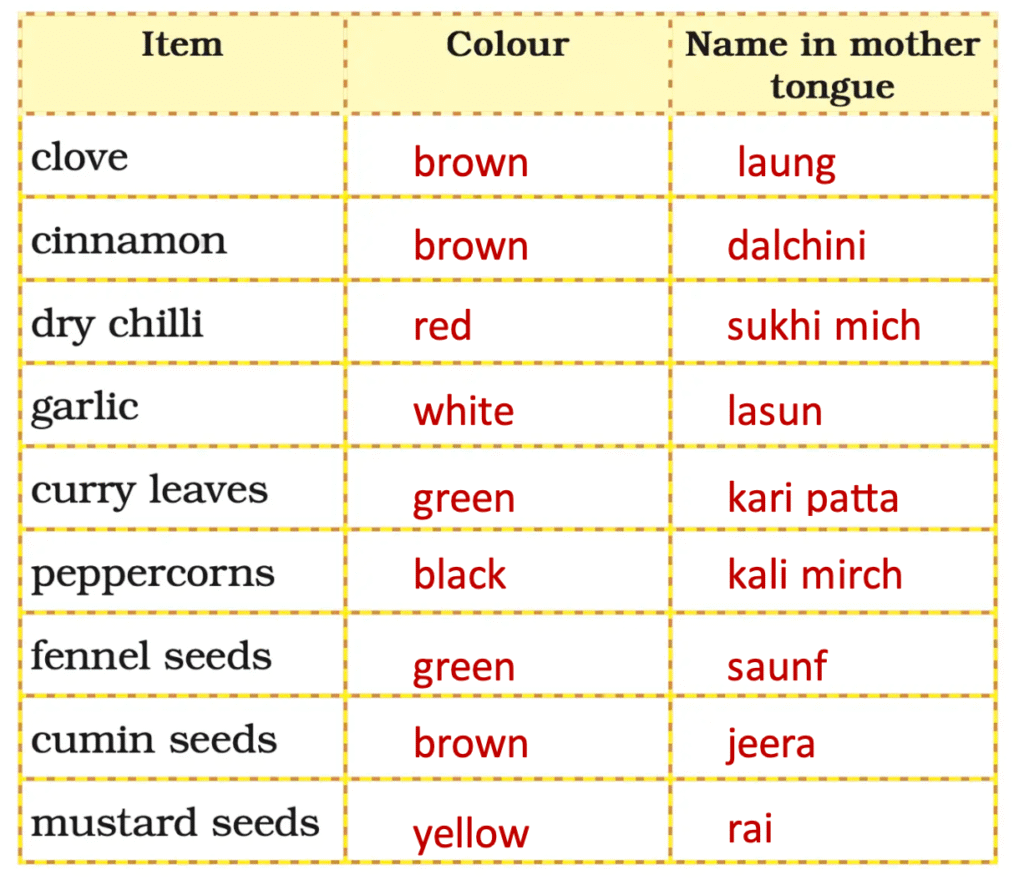Class 5 English Santoor Chapter 3 The Rainbow NCERT Solutions
Let us Think (Page 28)
A. Answer the following
1. Explain the meaning of the word ‘bow’ used in the poem.
Answer:
The word ‘bow’ used in the poem means the rainbow.
2. Which bridge does the poet like more and why?
Answer:
The poet likes the rainbow more because it bridges heaven, overtops the trees, builds a road from earth to sky, and looks far prettier than the bridges built over rivers.
3. The word ‘these’ is used for different things in stanzas one and two. What are the things for which ‘these’ has been used in each stanza?
Answer:
In the first stanza, ‘these’ refers to the boats and the ships sailing on the water bodies. In the second stanza, ‘these’ refers to the rainbow.
4. State whether the following are True or False.
a. Ships sail on the river.
b. Boats sail on the sea.
c. Bridges are built on the river.
d. A road is built from earth to the sky.
Answer:
a. False.
b. False.
c. True.
d. False.
B. Think and discuss
1. What are the ways in which you can cross a river?
Answer:
We can cross a river by using bridges. We can also use ships, boats, or ferries. Another way is by swimming across.
2. Have you ever seen a rainbow in real life or in pictures? How did you feel?
Answer:
Yes, I have seen a rainbow in real life. I felt delighted and amazed by its huge size and beautiful colors.
Let us Learn (Page 29)
A. Rearrange the letters of each word to form a meaningful word from the poem. Write them in the space provided.

Solution:
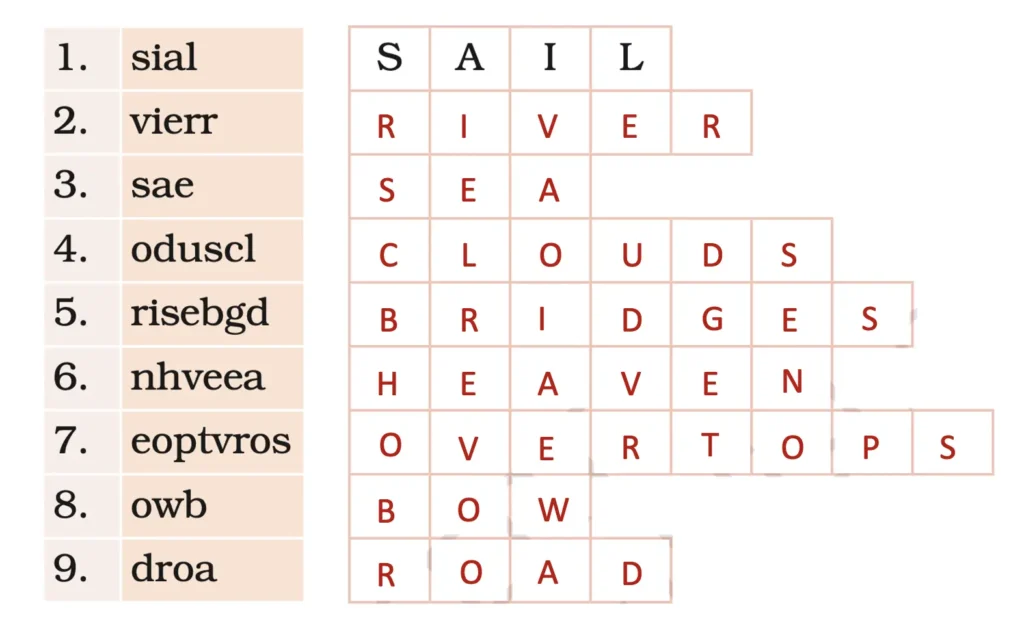
B. Work in pairs. One of you moves a finger around in the circle. When your partner says ‘Stop’, perform the action indicated by the segment that the finger lands on.
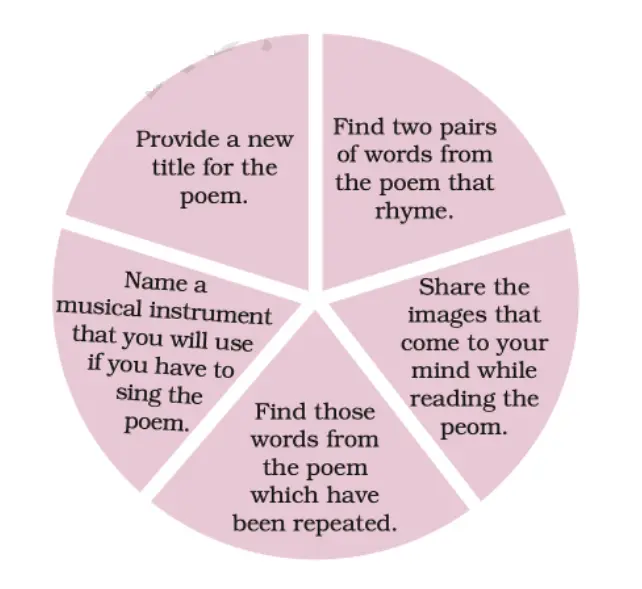
Let us Listen (Page 30)
Q. Sit in a circle and listen to the words read aloud by your teacher. Give five rhyming words for each word as indicated.
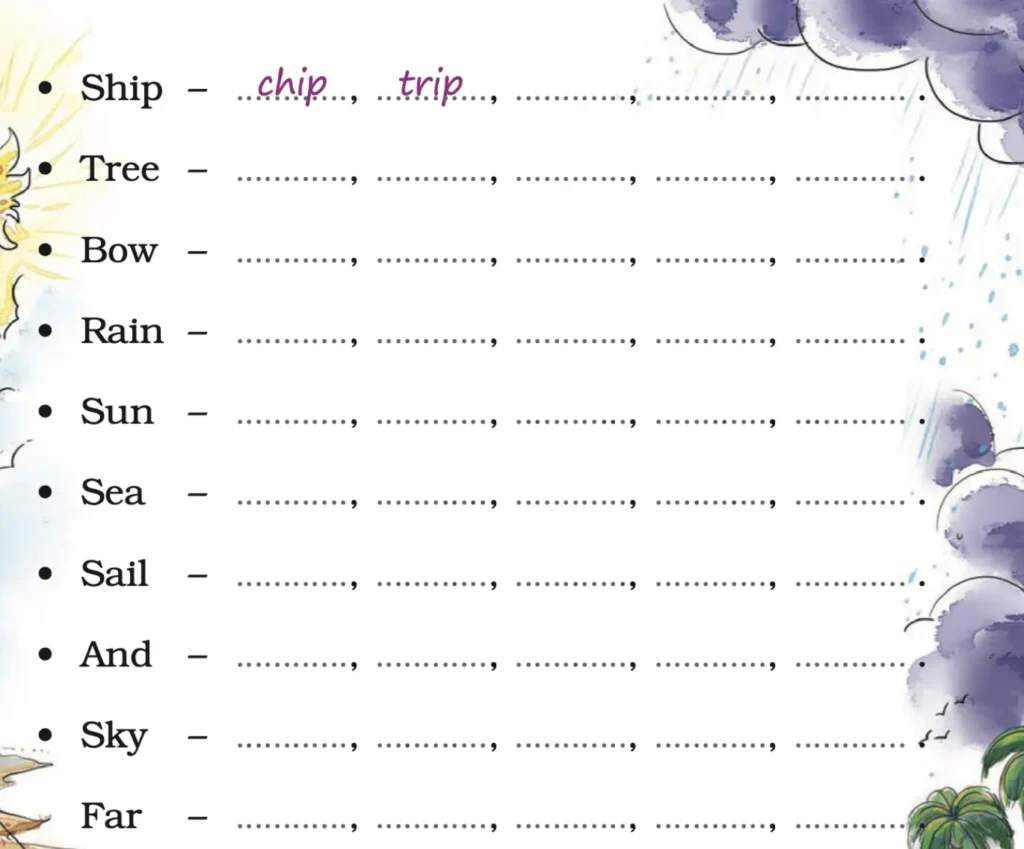
Answer:
• Ship – chip, trip, flip, slip, dip
• Tree – bee, see, free, three, knee
• Bow – cow, how, now, plough, wow
• Rain – pain, gain, chain, train, main
• Sun – fun, run, bun, gun, done
• Sea – bee, pea, tea, flea, key
• Sail – tail, nail, mail, pail, fail
• And – sand, band, hand, land, grand
• Sky – high, fly, buy, try, why
• Far – car, star, jar, bar, scar
Let us Write (Page 33)
A. The poem The Rainbow mentions boats and ships and their journey across
the water bodies. You too may have travelled to different places. Share your experience of travelling to any one place with your class.
Write a short paragraph of 80–100 words about your journey to a place you visited recently.
You may include the following points in your paragraph:
• Time of journey and destination
• Purpose of travel
• Whom you travelled with
• Things you liked or disliked during your travel
• Local dishes and snacks
• Monument, landmark or scenery
Answer:
Last month, I travelled to Amritsar with my family. The purpose of our trip was both sightseeing and relaxation. We visited the beautiful Golden Temple and Jallianwala Bagh. The journey was very memorable and enjoyable, though the heat during the day was a bit tiring. We also went to the Wagah Border, where the beating retreat ceremony filled our hearts with patriotism and pride. Later, we explored the old Amritsari market, enjoyed the famous Amritsari Kulcha, and bought some clothes and souvenirs. Overall, the trip was unforgettable because of the lively culture and spiritual vibes of Amritsar.
B. A word joins a ‘friend word’ to make new words, as shown below. Complete the table.
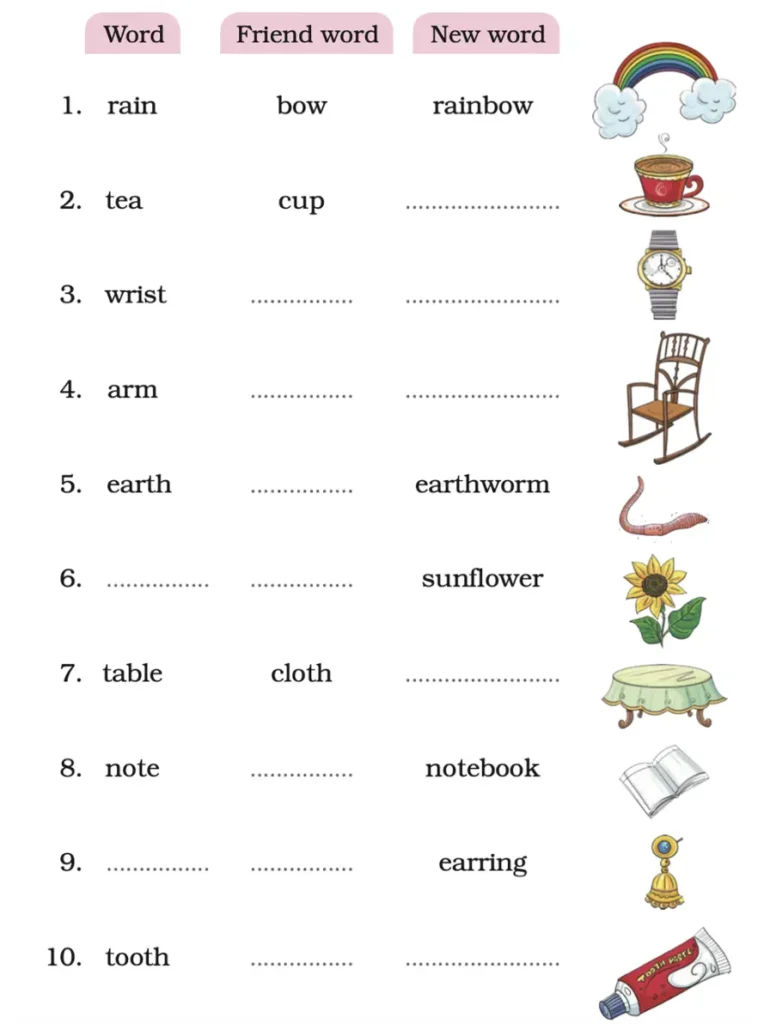
Solution:
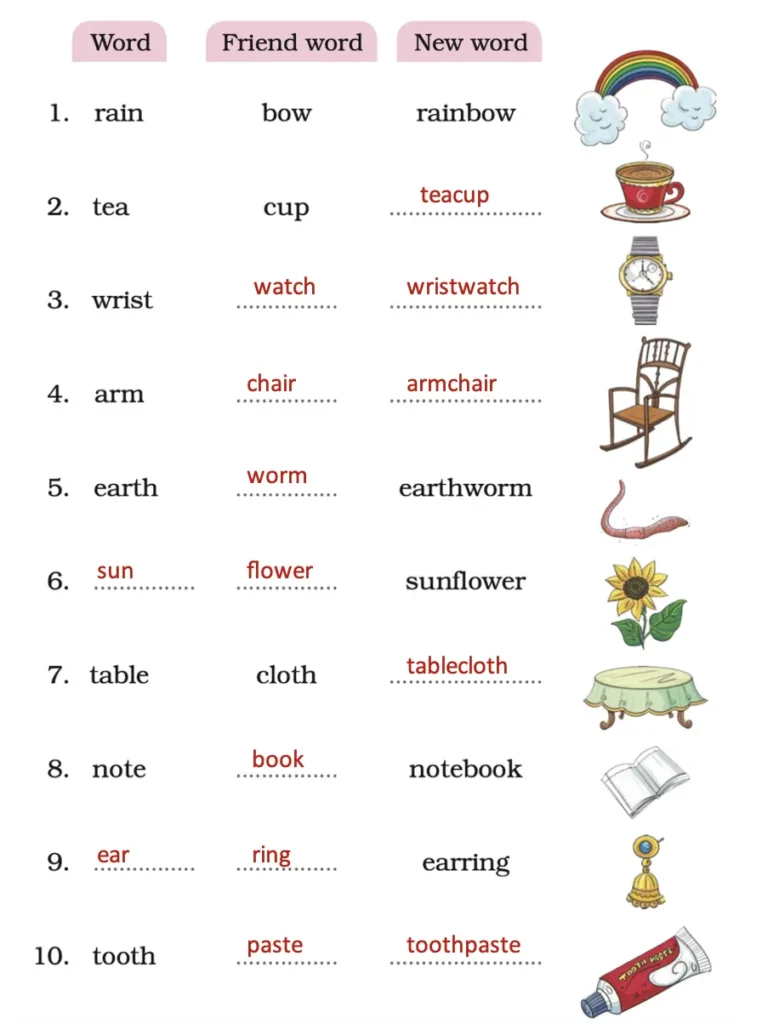
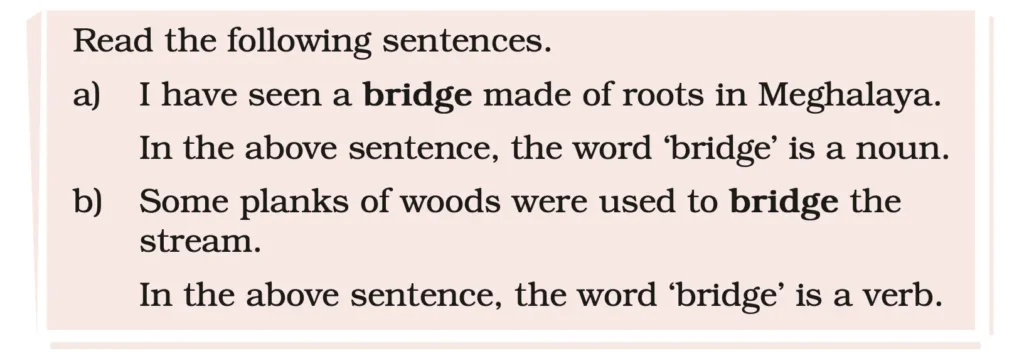
C. The following words are both nouns and verbs. Create two sentences for each word, once as a noun and then as a verb and write them in your notebook.
1. cut
2. bat
3. picture
4. cry
5. filter
6. dance
7. plant
8. paint
9. fly
10. face
Solution:
1. cut
(Noun) The cut on his finger was bleeding.
(Verb) She cut the paper with scissors.
2. bat
(Noun) The boy hit the ball with a bat.
(Verb) He tried to bat the flies away.
3. picture
(Noun) I like the picture hanging on the wall.
(Verb) Can you picture yourself living in the city?
4. cry
(Noun) The baby’s loud cry woke everyone up.
(Verb) She began to cry after hearing the sad news.
5. filter
(Noun) The water filter keeps the water clean.
(Verb) We must filter the juice before drinking it.
6. dance
(Noun) They enjoyed the traditional dance at the festival.
(Verb) She loves to dance to her favorite music.
7. plant
(Noun) The rose plant is growing in the garden.
(Verb) We will plant trees on Earth Day.
8. paint
(Noun) The wall needs a fresh coat of paint.
(Verb) She will paint a beautiful picture.
9. fly
(Noun) A fly was sitting on the food.
(Verb) Birds can fly high in the sky.
10. face
(Noun) She has a smile on her face.
(Verb) We must face our problems with courage.
D.
1. Write the opposites of the following words in the space provided. All your answers must begin with an ‘S’.

Solution:
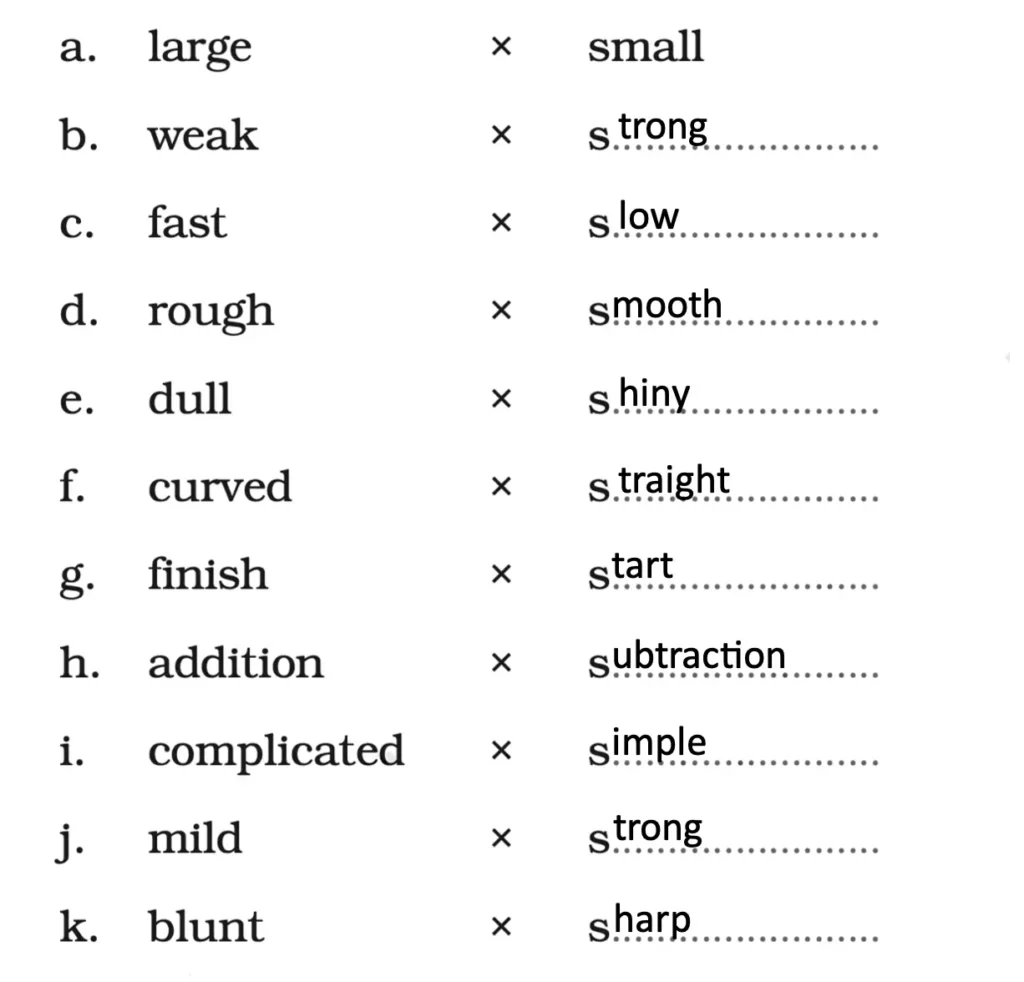
a. large × small
Sentence: An elephant is large, but a mouse is small.
b. weak × strong
Sentence: He exercises daily to become strong, not weak.
c. fast × slow
Sentence: A cheetah runs fast, but a turtle moves slow.
d. rough × smooth
Sentence: Sandpaper feels rough, but silk feels smooth.
e. dull × shiny
Sentence: The necklace looked dull, so it was polished to make it shiny.
f. curved × straight
Sentence: He drew a curved line, then a straight one.
g. finish × start
Sentence: We will start the race at 9 a.m. and finish at 10 a.m.
h. addition × subtraction
Sentence: In math, addition and subtraction are basic operations.
i. complicated × simple
Sentence: The puzzle looks complicated, but the answer is simple.
j. mild × strong
Sentence: The curry was not mild; it was very strong in flavor.
k. blunt × sharp
Sentence: The pencil was blunt, so I made it sharp with a sharpener.
2. In small groups, choose a letter of the English alphabet and create an exercise similar to the one above.
Solution:
Here’s an example exercise if your group chooses the letter “C”.
a. clear × cloudy
b. careful × careless
c. calm × chaotic
d. clever × clumsy
e. cheap × costly
E. VIBGYOR—The colours of the rainbow. VIBGYOR is an easy way to remember the seven colours of the rainbow in order.
V – Violet
I – Indigo
B – Blue
G – Green
Y – Yellow
O – Orange
R – Red
F. The following items, generally found in kitchens, add colour and taste to the food. What colours are they? Write them in the column. What do you call them in your mother tongue?
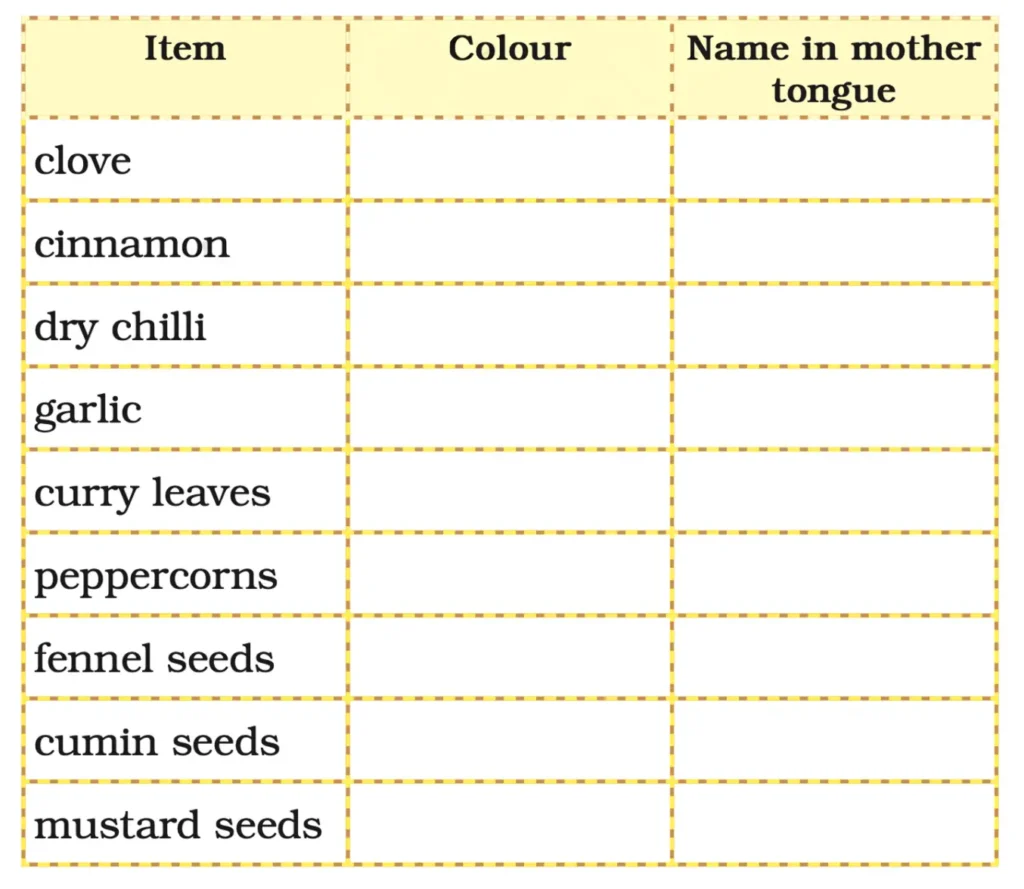
Solution:
